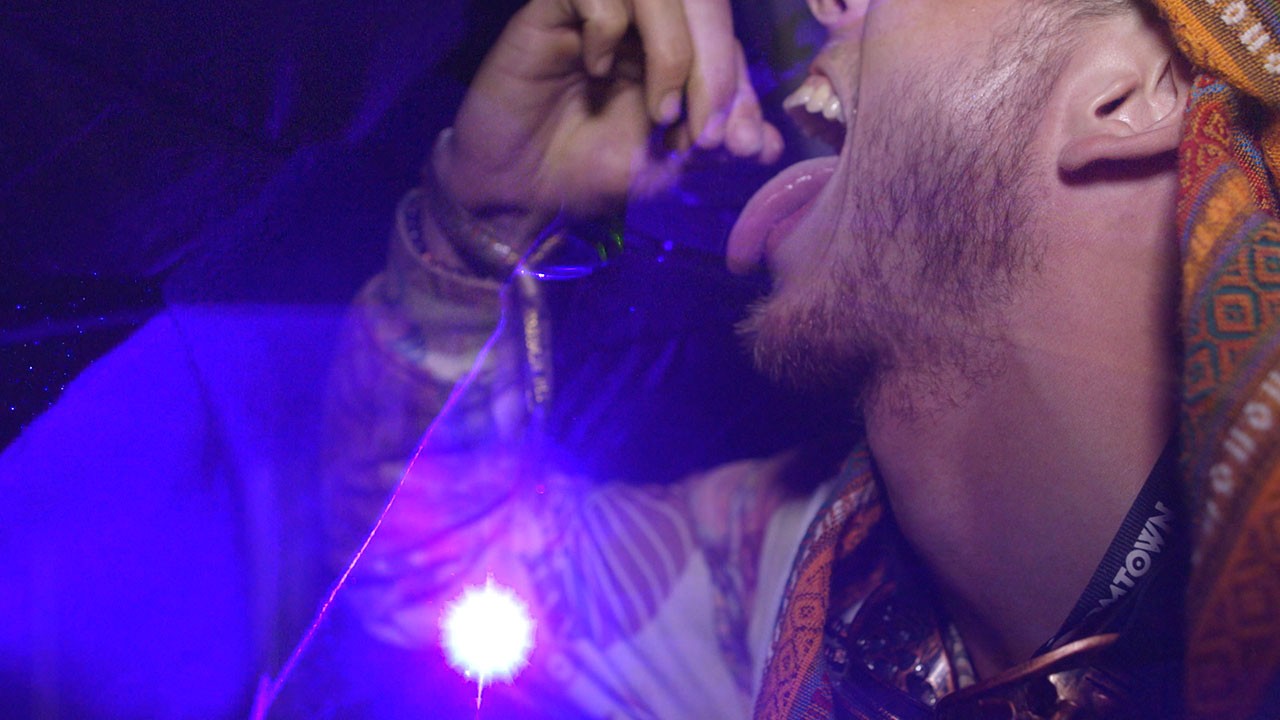Drug detection dogs tracing the lines out front of music festivals has become the norm in New South Wales. Dogs will often sniff their way through cars, bags, and up and down the legs of festival goers. And an indication from a drug dog can be all the police need to search you without your consent.Since the NSW drug sniffer dog program launched in the early 2000s, there's been a lot of concern around whether it violates civil liberties. The Police Powers (Drug Detection Dogs) Act 2001 gives police the right to use sniffer dogs outside any venue selling alcohol, any sporting match or music festival, train station, at any public place in Kings Cross, and—interestingly—inside any tattoo parlour.
Advertisement
This week though NSW Greens MP David Shoebridge has adopted a new angle of criticism, and that's the cost of sniffer dogs on taxpayers.According to figures released by the NSW Greens, each drug dog present at a music festival comes at a cost of around $2,000 an hour. "Based on the NSW Police Standard Operating Procedures and cost-recovery rates, three drug dogs at a festival costs $6,000 per hour," they said in a media release. "This means if each dog spends six hours at a festival it's a total cost of $36,041.""$2000 per hour for a dog who will 60 to 80 percent of the time sniff out someone who is not carrying any drugs… $6000 per hour for an operation to subject festival goers who are not carrying drugs to strip searches," said Shoebridge, who heads up the anti-drug dog Sniff Off campaign. "$6000 per hour for an operation that will mostly catch people carrying only small amounts of drugs."
WATCH: VICE has teamed up with harm minimisation group The Loop to bring you Safe Sesh
And according to all the evidence, he's mostly right.In 2006, there was an extensive review of the NSW drug dog program. The results were almost totally negative. Ombudsman Bruce Barbour found police uncovered drugs only 26 percent of the time that dogs gave a positive indication. That means in three-quarters of cases, the dogs were wrong."Despite the best efforts of police officers, the use of drug detection dogs has proven to be an ineffective tool for detecting drug dealers. Overwhelmingly, the use of drug detection dogs has led to public searches of individuals in which no drugs were found," Barbour wrote, "or to the detection of (mostly young) adults in possession of very small amounts of cannabis for personal use."Barbour also found those singled out by drug dogs were overwhelmingly young people—some 47 percent of them under 25 years old. Most were picked up at train stations or outside bars or clubs. Only 2.4 percent of detections happened at "dance parties."And yet, NSW Police is spending—on average—some $9 million on its drug dog detection program, by far the largest in the country. "Any other expensive and ineffective police program that got it wrong this often would be scrapped," Shoebridge said. "It's time for the drug dogs to go and the government to implement harm minimisation policies that actually work."However, that doesn't seem to be the way things are going. Victoria Police has this year started using sniffer dogs to patrol Chapel Street, a popular nightspot for young people. And in the Northern Territory, politicians are considering using drug detection dogs in schools.Contacted for comment, the NSW Police told VICE they would never comment directly on figures.
WATCH: VICE has teamed up with harm minimisation group The Loop to bring you Safe Sesh

And according to all the evidence, he's mostly right.In 2006, there was an extensive review of the NSW drug dog program. The results were almost totally negative. Ombudsman Bruce Barbour found police uncovered drugs only 26 percent of the time that dogs gave a positive indication. That means in three-quarters of cases, the dogs were wrong."Despite the best efforts of police officers, the use of drug detection dogs has proven to be an ineffective tool for detecting drug dealers. Overwhelmingly, the use of drug detection dogs has led to public searches of individuals in which no drugs were found," Barbour wrote, "or to the detection of (mostly young) adults in possession of very small amounts of cannabis for personal use."Barbour also found those singled out by drug dogs were overwhelmingly young people—some 47 percent of them under 25 years old. Most were picked up at train stations or outside bars or clubs. Only 2.4 percent of detections happened at "dance parties."And yet, NSW Police is spending—on average—some $9 million on its drug dog detection program, by far the largest in the country. "Any other expensive and ineffective police program that got it wrong this often would be scrapped," Shoebridge said. "It's time for the drug dogs to go and the government to implement harm minimisation policies that actually work."However, that doesn't seem to be the way things are going. Victoria Police has this year started using sniffer dogs to patrol Chapel Street, a popular nightspot for young people. And in the Northern Territory, politicians are considering using drug detection dogs in schools.Contacted for comment, the NSW Police told VICE they would never comment directly on figures.
